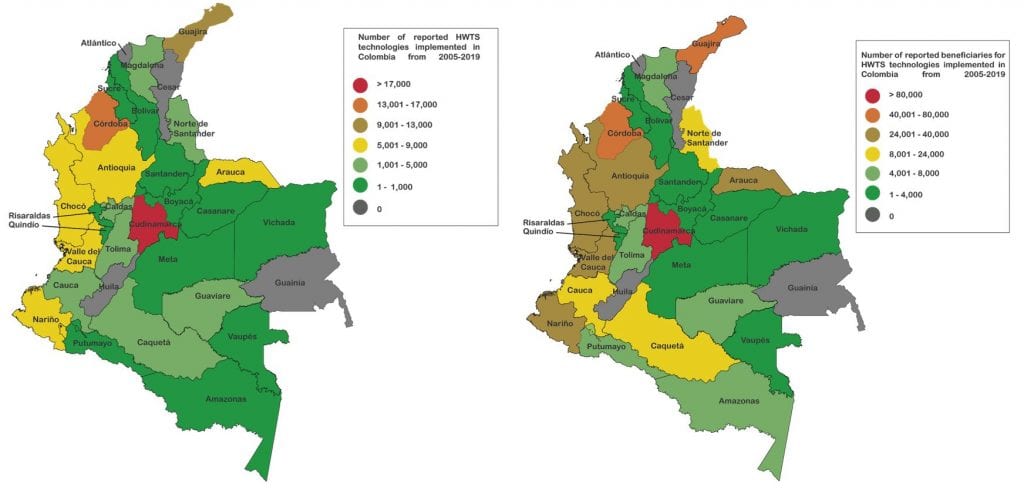This report is available for full download to PDF.
Lea este reporte en Español aquí.
Executive Summary
In May 2019, organizations working on Household Water Treatment and Safe Storage (HWTS) carried out the first National Learning and Experience Exchange for implementers in Colombia. Subsequently, one of the priorities established was documenting specific information about HWTS implementation. In response, the Centre for Affordable Water and Sanitation Technology (CAWST) designed a database to map out organizations’ HWTS implementations and interventions across the country. Through a collaboration between CAWST and Engineering for Change, this research shows the current interventions in Colombia as well as the main stakeholders and trends based on the information gathered in this first HWTS database in Colombia .
The data highlight the efforts made towards improving HWTS implementation in Colombia, comprising at least 32 organizations, mainly non-government organizations (NGOs), Rotary clubs and the private sector. Dynamics amongst stakeholders showed alliances between private businesses with humanitarian institutions to produce and implement technologies respectively. Ceramic pot and candle ceramic were the most implemented types of filters.
The total impact of implementations from 2005-2019, comprises an estimate of over 660,000 beneficiaries. The departments of Cundinamarca, Guajira and Córdoba had the highest number of implementations. The most common type of implementation was by direct sales, which occurred in urban areas (centered in capital cities of the different reported departments). However, implementations in rural areas were mostly to offer assistance to community development. HWTS technologies were also implemented for humanitarian assistance or emergency aid and addressed either climate (drought or flooding) or sociopolitical displacement, migration and settlement of people. Information on who will cover the cost of spare parts and replacement of the implemented filters is unclear, even though most of the technologies were subsidized by the implementers. Finally, data on the quality of the water source, the presence of chemical contamination as well as the efficiency, monitoring and current state of HWTS technologies once implemented were mainly unavailable.
Based on this analysis, we present various conclusions and recommendations for HWTS interventions in Colombia. The results show only filtration technologies were implemented, with each organization implementing a single solution. To improve both adoption and suitability of technologies, a multi barrier approach is recommended once the context has been sufficiently analyzed and feasible technology has been selected. Due to the great uncertainty of water quality both at the collection source, at the end of filtration and after storage and use, long term monitoring strategies should be implemented. Lastly, documenting and publicly disclosing implementation information will strengthen the current database and allow further analyses.
Read the 17-page report here.

Number of reported HWTS technologies (left) and HWTS beneficiaries (right) of implementations in each department in Colombia from 2005 to June 2019.
Edited by: Grace Burleson
Additional contribution: Eva Manzanos, Mariela Machado

No Comments.